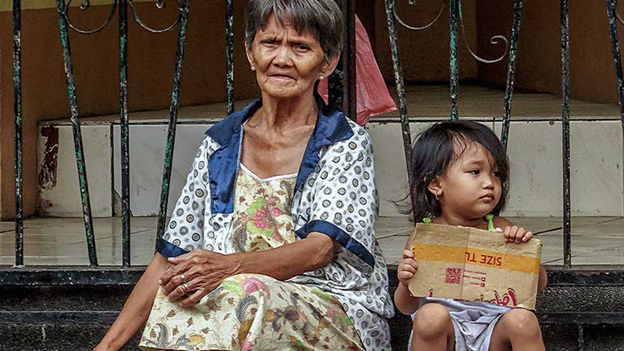|
Despite the unprecedented worldwide expansion of social protection during the COVID-19 crisis, more than 4 billion people around the world remain entirely unprotected, a new International Labour Organization (ILO) report says. It finds that the pandemic response was uneven and insufficient, deepening the gap between countries with high and low income levels and failing to afford the much-needed social protection that all human beings deserve.
Social protection includes access to health care and income security, particularly in relation to old age, unemployment, sickness, disability, work injury, maternity or loss of a main income earner, as well as for families with children.
“Countries are at a crossroads,” said ILO Director-General, Guy Ryder. “This is a pivotal moment to harness the pandemic response to build a new generation of rights-based social protection systems. These can cushion people from future crises and give workers and businesses the security to tackle the multiple transitions ahead with confidence and with hope. We must recognize that effective and comprehensive social protection is not just essential for social justice and decent work but for creating a sustainable and resilient future too.”
The World Social Protection Report 2020-22: Social protection at the crossroads – in pursuit of a better future gives a global overview of recent developments in social protection systems, including social protection floors, and covers the impact of the COVID-19 pandemic. The report identifies protection gaps and sets out key policy recommendations, including in relation to the targets of the 2030 Agenda for Sustainable Development.
Currently, only 47 per cent of the global population are effectively covered by at least one social protection benefit, while 4.1 billion people (53 per cent) obtain no income security at all from their national social protection system.
There are significant regional inequalities in social protection. Europe and Central Asia have the highest rates of coverage, with 84 per cent of people being covered by at least one benefit. The Americas are also above the global average, with 64.3 per cent. Asia and the Pacific (44 per cent), the Arab States (40 per cent) and Africa (17.4 per cent) have marked coverage gaps.
Worldwide, the vast majority of children still have no effective social protection coverage – only one in four children (26.4 per cent) receives a social protection benefit. Only 45 per cent of women with newborns worldwide receive a cash maternity benefit. Only one in three persons with severe disabilities (33.5 per cent) worldwide receive a disability benefit. Coverage of unemployment benefits is even lower; only 18.6 per cent of unemployed workers worldwide are effectively covered. And while 77.5 per cent of people above retirement age receive some form of old-age pension, major disparities remain across regions, between rural and urban areas, and between women and men.
Government spending on social protection also varies significantly. On average, countries spend 12.8 per cent of their gross domestic product (GDP) on social protection (excluding health), however high-income countries spend 16.4 per cent and low-income countries only 1.1 per cent of their GDP on social protection.
The report says that the financing gap (the additional spending required to ensure at least minimum social protection for all) has increased by approximately 30 per cent since the start of the COVID-19 crisis.
To guarantee at least basic social protection coverage, low-income countries would need to invest an additional US$77.9 billion per year, lower-middle-income countries an additional US$362.9 billion per year and upper-middle-income countries a further US$750.8 billion per year. That’s equivalent to 15.9, 5.1 and 3.1 per cent of their GDP, respectively.
“There is an enormous push for countries to move to fiscal consolidation, after the massive public expenditure of their crisis response measures, but it would be seriously damaging to cut back on social protection; investment is required here and now,” said Shahra Razavi, Director, ILO Social Protection Department.
“Social protection is an important tool that can create wide-ranging social and economic benefits for countries at all levels of development. It can underpin better health and education, greater equality, more sustainable economic systems, better managed migration and the observance of core rights. Building the systems that can deliver these positive outcomes will require a mix of financing sources and greater international solidarity, particularly with support for poorer countries. But the benefits of success will reach beyond national borders to benefit us all,” she said.
Specific measures to promote universal social protection were highlighted in the Global Call to Action for a human-centred recovery from the COVID-19 pandemic . The Call to Action, which outlines a comprehensive agenda for recovery, was endorsed unanimously in June 2021 by the ILO’s Member States, representing governments, workers’ and employers’ organizations.
|







